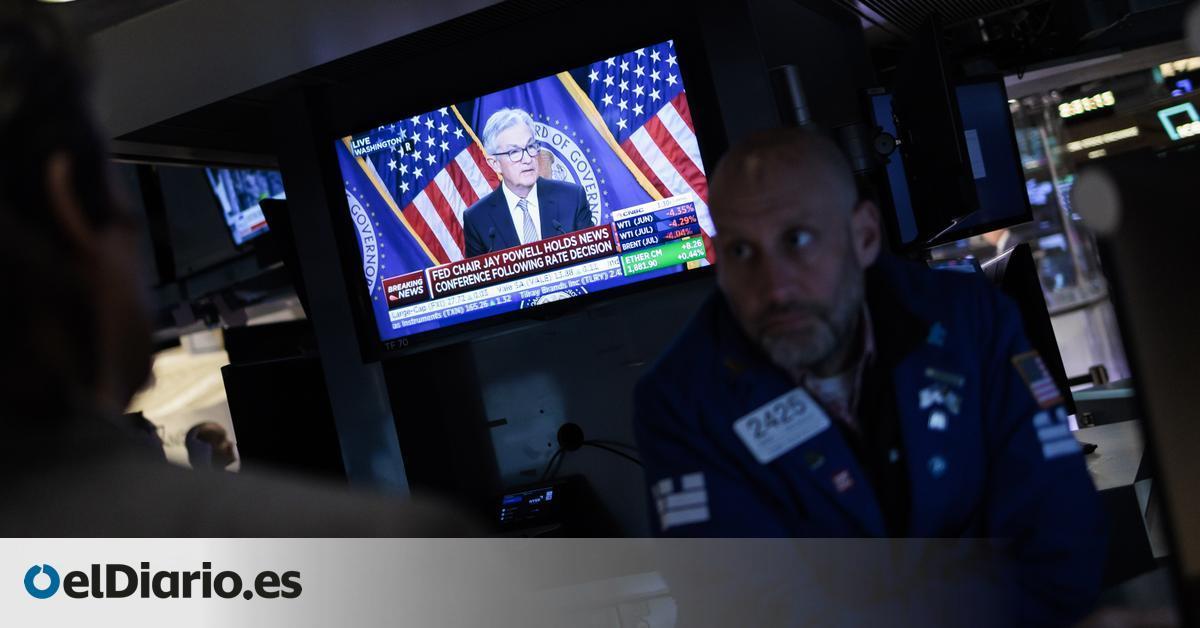
The Federal Reserve (Fed) has decided to stop the rise in interest rates in the United States (USA) due to the drop in inflation. The North American central bank has left the official ‘price’ of money in the range of between 5% and 5.25%, after an increase of 5 points in 10 consecutive meetings since March 2022, up to a maximum of 2007. Although it has warned that there will be more increases because there is a high risk that price increases will accelerate again.
The Bank of Spain calculates that the increases in interest rates only lowered inflation by 2 tenths in 2022
Further
In the statement published this Wednesday by the institution, it explains that “keeping the range of official interest rates stable at this meeting allows it to evaluate additional information and its implications for monetary policy.” And it adds that “to determine the degree of additional tightening that may be appropriate to return inflation to 2% over time, it will take into account accumulated interest rate increases, the delay with which monetary policy affects economic activity and inflation, and economic and financial factors [en referencia a los colapsos bancarios de los últimos meses]”.
Expert forecasts already valued this decision due to the slowdown in economic growth and, above all, due to the drop in inflation, which in May fell to 4.1% in the US, compared to the same month of the previous year, 8 decimals per below April’s year-over-year rate.
“Committee evaluations [de política monetaria] They will take into account a wide range of information, including readings on labor market conditions, price pressures and inflation expectations, and financial and international developments.
The institution chaired by Jerome Powell already lowered its aggressiveness at its May meeting, with a 0.25 point rise in interest rates, and assured that it would be guided by the data to assess further increases. Then it was already interpreted that it could be the last increase. Regarding a reduction in interest rates, however, he has made it clear that it will not take place this year, since if “a pause” has been decided, it is because a large part “of the monetary adjustment was carried out last summer and still has to be transferred to the economy”.
bank collapses
Until now, the Fed had continued its relentless fight against inflation, which, as in the case of the European Central Bank (ECB), consists of suffocating the economy with the increase in financing to moderate price rises. A strategy that assumes the risk of economic recession and rising unemployment. And also the threat of damaging financial stability, as seen with the recent bank collapses in the United States and Switzerland.
The cycle of increases in the ‘price’ of money has been the most aggressive in 40 years, from 0%-0.25% 15 months ago. And the consequences have been the fall of Silicon Valley Bank, First Republic Bank and Signature Bank, which in total have demanded 20,000 million dollars, 13,000 million and 2,500 million, respectively, in public bailouts to guarantee deposits.
This Thursday, the ECB is expected to announce another 0.25 point increase in official interest rates in the euro area, up to 4%. The European institution began raising rates later than the Fed, in July, and is currently suffering from higher inflation, at 6.1% in May.
recession risk
The central banks are fighting against inflation on two fronts: with increases in official interest rates (their most visible tool due to its impact on making mortgages and other loans more expensive) and with the extinction of bond purchases. of public debt (of the states) and corporate (of non-financial companies) in the markets, which is another way of increasing financing costs.
In addition to deteriorating the consumption and saving capacity of families and making it difficult for states to borrow to increase public spending, they damage the margin of companies to invest, grow and, therefore, to create jobs. Because under the analysis of monetary policy, inflation for a long time is more dangerous than a period of falling activity and rising unemployment. Both the Fed and the ECB have repeatedly admitted that they do not have other less painful tools to contain prices, but criticism of this approach is multiplying.
For example, in the euro area, since 2015, the drop in interest rates to 0% and the debt purchase programs, which are now being reversed, were launched with the opposite objective: to promote recovery and reduce unemployment.
The risk now arises both in the mortgage market and in the financing capacity of some countries. Especially from the most over-indebted countries such as Spain or Italy, which have not yet managed to reduce the historic imbalances between public income and spending caused by the pandemic and which have once again put pressure on the Russian invasion of Ukraine and the inflation crisis.
Source: www.eldiario.es

